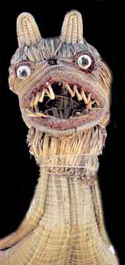 |
|
|||
|
|
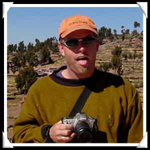 |
It is easy to feel out of breath after climbing a simple flight of stairs. Coca leaves are bought and sold legally throughout Peru. It is believed to combat the sludgy effects of altitude sickness and fatigue. Just throw a handful of coca leaves in a cup of boiling water and, WA-la!. It really does seem to work although it hasn't been proven to have any effect at all. You may test positive for cocaine, however, if you do a drug test afterwards. |
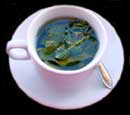 |
|
Mata de Coca (coca tea) |
|
Uros Island The first stop of our lake tour was Uros island. It actually was a floating island built entirely of reeds. History has it that many years ago a small tribe of people wanted to isolate themselves from the mainland Collas and Inca people and thus they began this unique floating lifestyle. |
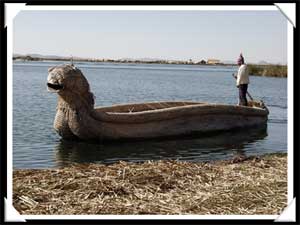 |
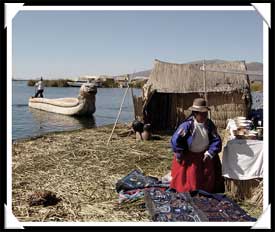 |
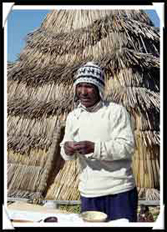 |
|
To build and maintain the island, the surrounding reeds are cut and laid on top as the bottom ones rot off. It has the potential to actually drift around during the winter months. The bottom of the reeds are eaten and used to prevent goiters. |
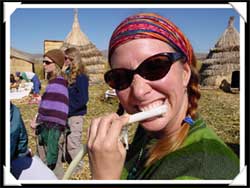 |
 |
Home Stay on Amantani Island We spent a night with a local family on Isla Amantani, (which has been the least touristy of the islands). Reyna, was a great host, although a little shy to foreigners. However, her son, Jesus, was a curious little ham, and played hide-and-seek in every possible nook of our thatched room. Reyna just had a baby two weeks before we arrived and was already hiking up and down the steep island!! In the evening, she brought out her beautiful embroidered shirt, shawl, and skirt and dressed me up in them. Brian wore her husbands poncho and we all went to a fiesta and danced to traditional Peruvian music with pipe-of-pan flutes and drums. |
|
The islanders of Amantani spoke Quechua and were great knitters and weavers and were constantly spinning threads or spreading their goods out to sell. These traditional hats in the photos were not only cool-looking, but very necessary during the cold nights. There is a temple on top of the island which we hiked to see the sunset. It was located at 4000 meters above sea level and had a great view of the snowy Bolivian mountains across the lake. |
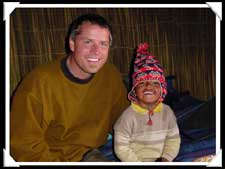 |
 |
Maria was the 2 year old in the family and without television, she found the baby chickens a perfect way to entertain herself. She was a bit more shy than Jesus with us since the family only took in travelers about once a month. Our meals were simple with a lot of potato accessories. There are over 180 different varieties of spuds in this area. Sprigs of mint were picked out back and flavored our water very well. |
|
Taquile Island Last stop on our three-island tour was Taquile Island. It is a bit more visited and the locals wear quite bright clothing and hats. They are also are known for their knitting and weaving (although they charge TOO much for it, even the local guide thought so). The doorways were all very short. |
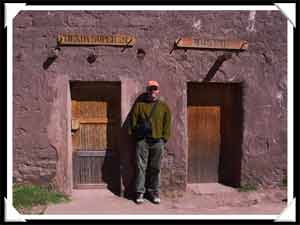 |
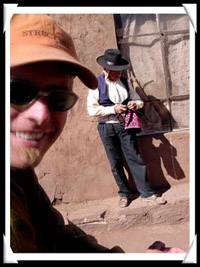 |
The men on Taquile Island do most of the knitting (whereas only the women did on Amantani). This is a man of authority in the community due to the style of hat he is wearing covered by the black fedora. There is a different hat for single and married men as well. Brian couldn't decide which hat to wear so he settled for his favorite baseball cap. |
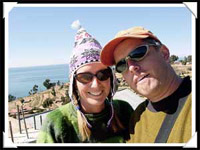 |
 |